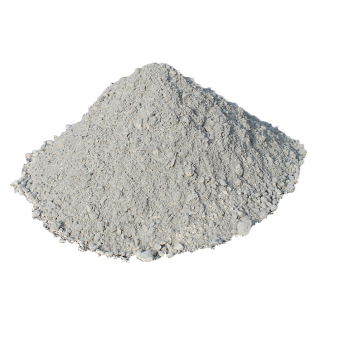The characteristics of lightweight castable refractory
Jun 07, 2022
Lightweight castable refractory is composed of refractory lightweight aggregates, powders, binders, and additives. General regulations: The bulk density is less than 1800kg/m3, the refractory is not required, or the total porosity is greater than 45%, and the castable with a linear shrinkage of less than 1.5% at the specified temperature is called a lightweight refractory castable.
Lightweight castable refractories have the characteristics of low bulk density and low thermal conductivity, so they have good thermal insulation properties. lightweight castable refractory comes in a variety of qualities and are generally classified according to the principles of lightweight aggregate varieties, manufacturing methods, binder types, and performance grades.
Energy shortage is a reality in today's world, and energy conservation is an important task for all countries. In this situation, lightweight castable refractory has developed rapidly, with expanded varieties, improved quality, increased output, and wide application. In the past, in kilns above 1000, the lightweight refractory castable can only be used as a thermal insulation layer, and it is difficult to directly contact the flame. At present, lightweight castable refractory for flame kilns below 1800 can be produced, some of which can be used as working linings.

Lightweight castable refractory is widely used in kilns and thermal equipment in metallurgy, petrochemical, electric power, building materials, and other industries. They are generally used as insulation layers, working layers, or weighing elements, and have achieved good results. Good results have been achieved by using heat shields only on the tundish where it is in contact with liquid metal or slag.
The performance test of lightweight refractory castable is basically the same as that of heavy refractory castable. The difference is that the softening temperature under load is 0.1 MPa
It should be pointed out that, with the need for energy saving in industrial kilns, light-weight refractory castables are bound to receive greater development. Its direction is a lightweight, high strength, low thermal conductivity, convenient use, and low price. In addition, lightweight aggregates and binders are generally used in combination, which is worse than admixtures, resulting in the development of excellent lightweight castable refractory.
Relevant information
-

Main properties of magnesium oxide refractory
Performance characteristics of magnesia refractories and other basic refractories Performance characteristics of magnesia refractories and other basic refractories Refractories containing more than 80% ... -

What properties of lightweight insulation fire clay bricks can be improved by the addition of kyanite?
Lightweight insulation fire clay bricks are a kind of shaped refractory material with clay as the main raw material, which is processed, shaped, dried, and calcined with clay. on the kiln. Due to the r ... -

How is the effect of white fused alumina abrasive used in refractory materials?
After mixing, forming, drying, and firing at high temperature in a shuttle kiln. The product has the characteristics of high refractoriness, good thermal shock stability of white corundum, high high te ... -

Characteristics of refractory magnesia chrome bricks for lime kiln
Lime kilns are mainly classified into square kilns and circular kilns. According to the classification of fired products, they can be divided into lime kilns, ceramic kilns, cement kilns, glass kilns, ...

